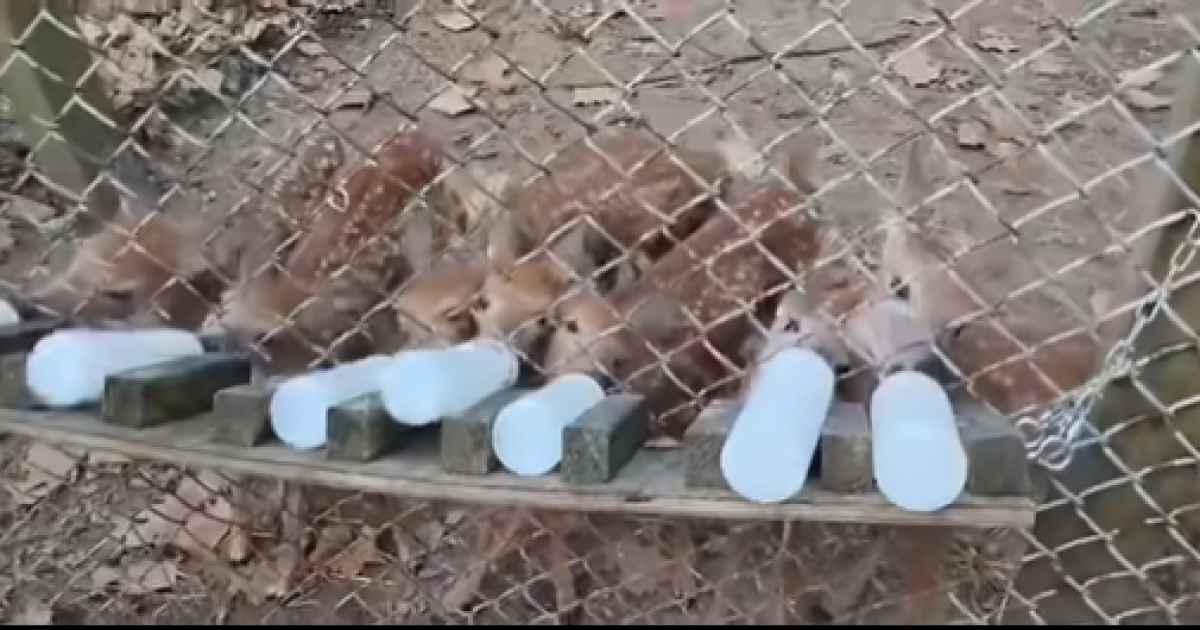MEADE COUNTY, Ky. (LEX 18) — There is growing controversy among wildlife rehabilitators and animal lovers after the Kentucky Department of Fish and Wildlife euthanized more than 20 fawns at a Meade County facility earlier this week. The agency says this difficult decision was made as part of an effort to curb Chronic Wasting Disease (CWD) in the state’s deer population.
According to the Centers for Disease Control and Prevention, CWD is a fatal disease that affects deer and related species. There is currently no vaccine or cure for infected animals.
However, wildlife rehabilitation professionals are voicing concerns over the necessity of euthanizing the deer in this situation. Some questioned whether less drastic options were considered.
“First of all, and honestly to come right to the point, destroying these 22 fawns does exactly what to stop chronic wasting disease?” asked Jerry Mraz, chairman of the board of directors at Nolin River Wildlife, a rehabilitation organization near Elizabethtown.
In a statement from Kentucky Fish and Wildlife, a spokesperson said, “With the cooperation of the new operators of the Broadbent Wildlife Sanctuary, a wildlife rehabilitation facility, Kentucky Department of Fish and Wildlife Resources staff on Tuesday, Aug. 26, 2025, humanely euthanized more than 20 deer being illegally held at the unpermitted Meade County facility in violation of a state regulation in place to limit the spread of Chronic Wasting Disease (CWD) [fw.ky.gov].
The previous operator of the facility illegally accepted the animals into the facility’s care after Meade, Breckinridge and Hardin counties [fw.ky.gov] were added to the state’s CWD Surveillance Zone in October 2024. Rehabilitation of deer is prohibited in CWD Surveillance Zone counties, per administrative regulation (301 KAR 2:075 [apps.legislature.ky.gov]).
Despite these regulatory concerns, it remains unclear whether any of the euthanized deer had tested positive for the disease—or where the fawns originated.
Mraz told LEX 18 that curbing chronic wasting disease is top of mind for rehabbers like him, but at times, the rules and regulations put in place by Fish and Wildlife are confusing.
“I look at this, it’s almost not a scientific issue, it’s a communications issue or a failure to communicate,” Mraz said. “We seem to have gone to the fire-ready-aim approach and have taken an action that I’m not sure how or what it benefits other than potentially casting some bad looks toward Fish and Wildlife.”
Furthermore, Mraz worries about the ramifications of the euthanasia controversy.
“We in the rehab world are concerned,” Mraz said. “We’ve lost people that do rehabilitation across the state, numbers have drastically decreased, and to be perfectly honest, some have been frustrated in attempting to follow regulations—a situation like this just furthers that.”
A spokesperson for the Kentucky Department of Fish and Wildlife said in a statement, “While the agency regrets the need for euthanasia in this situation, regulations were put in place to limit the spread of Chronic Wasting Disease.”

